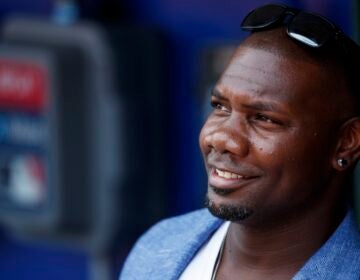Serious and playful looks at American art, politics assembled for PAFA show
Listen-

-

-

-
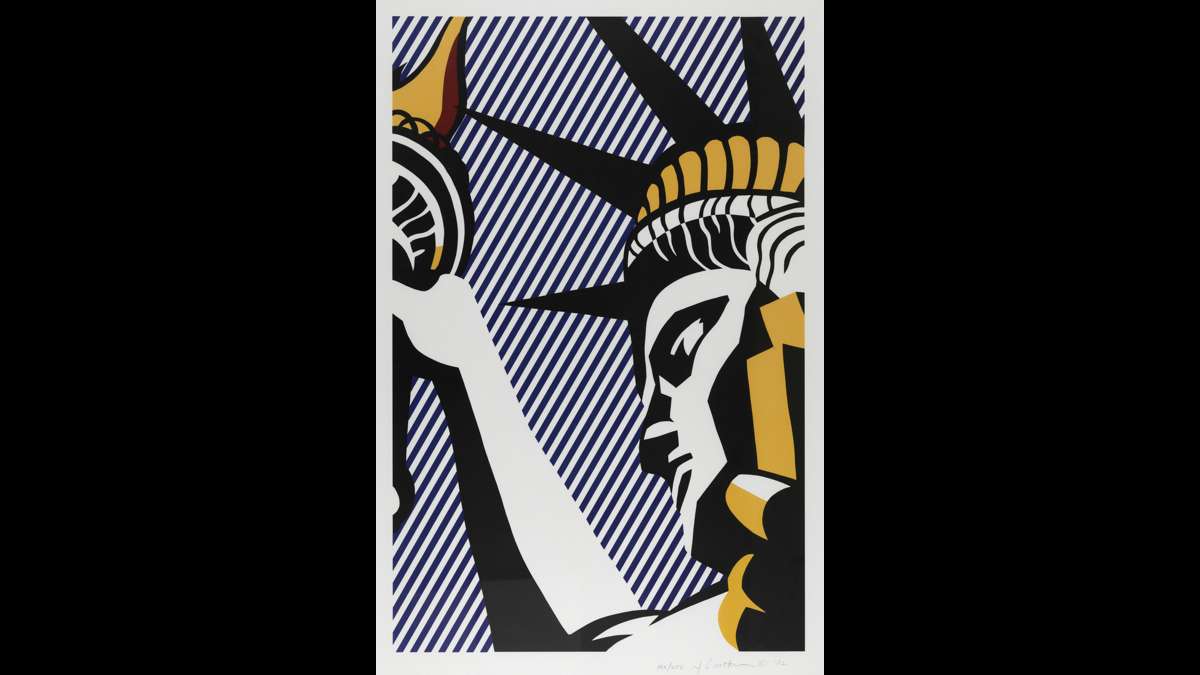
-
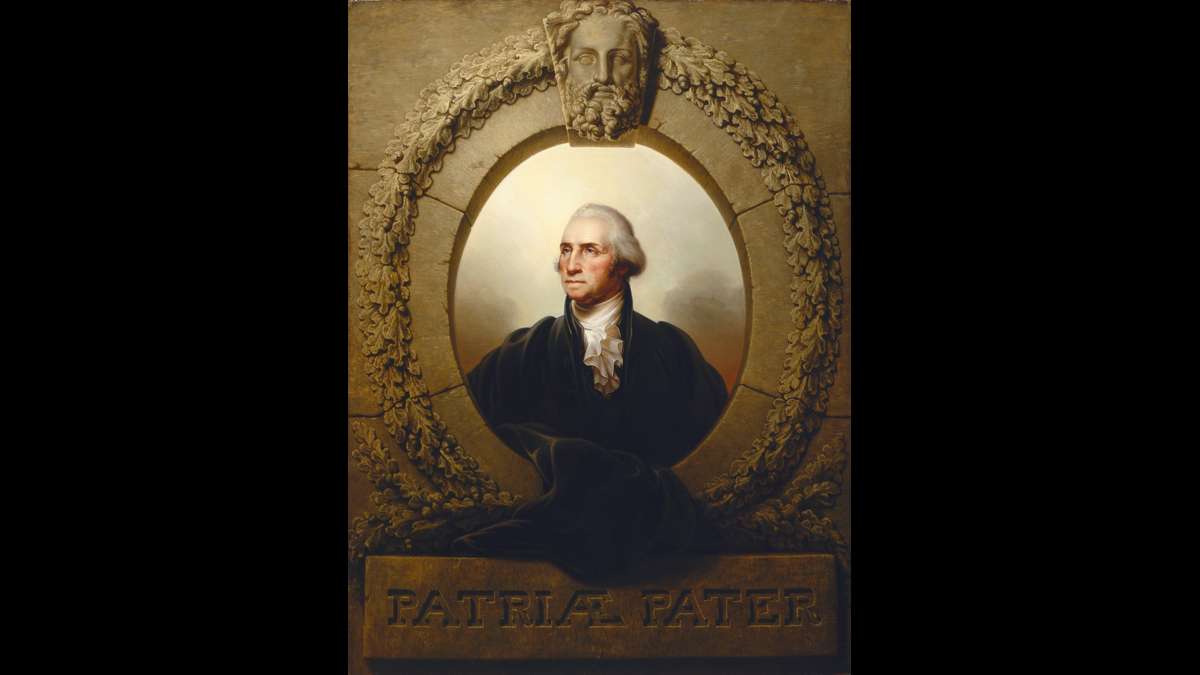
-
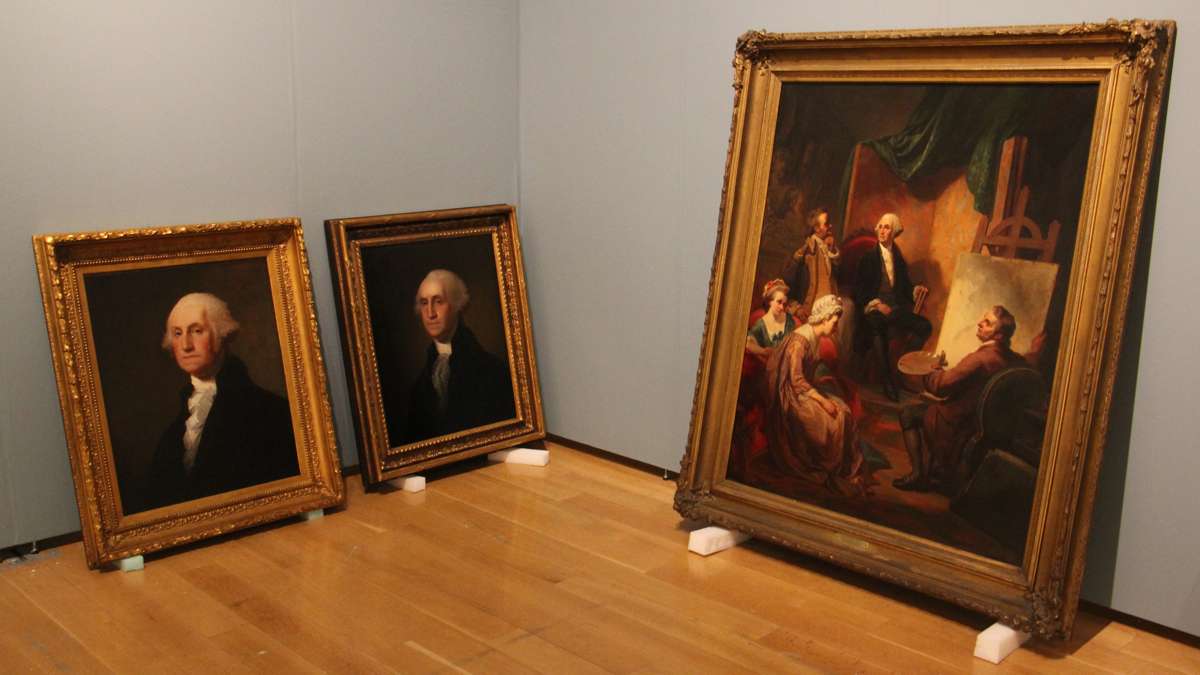
-

-

-
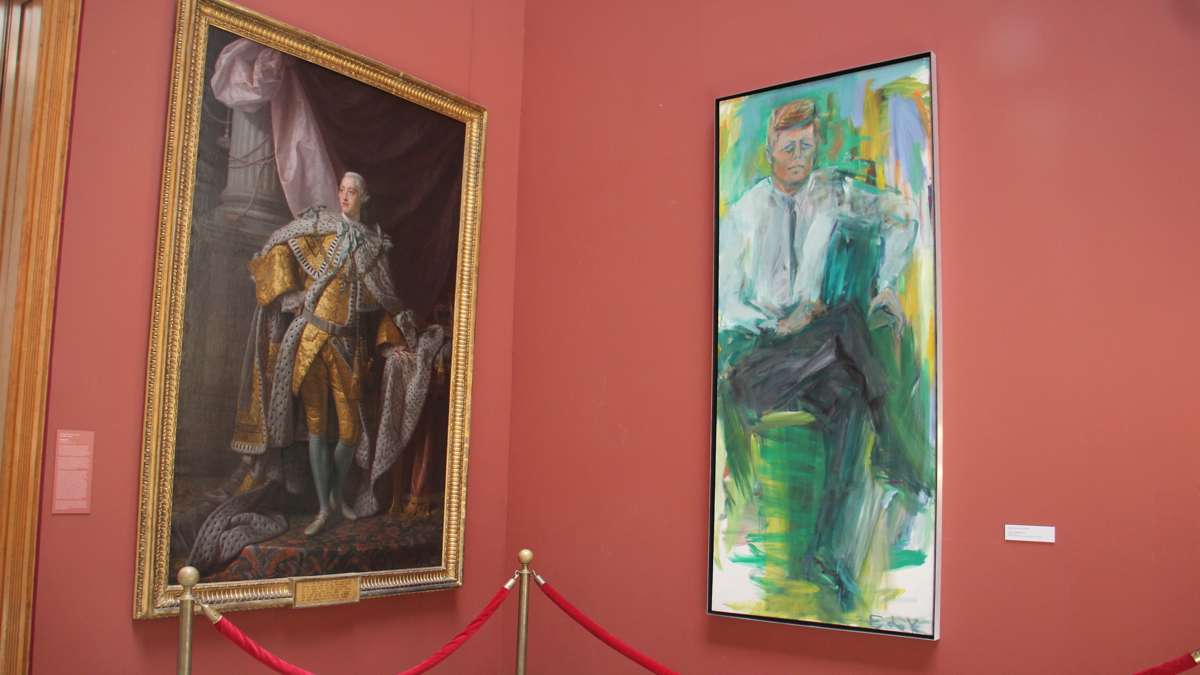
-

Red Grooms' 'Philadelphia Cornucopia' was created for the city's tricentennial in 1982. (Emma Lee/WHYY)
-
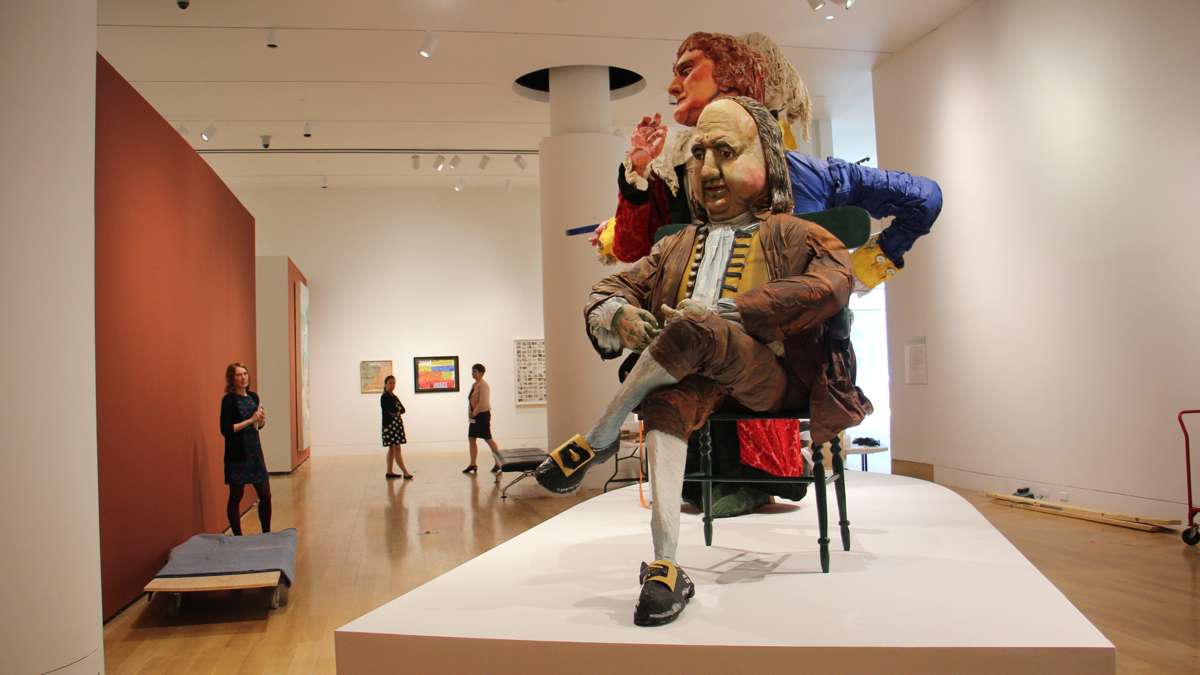
-
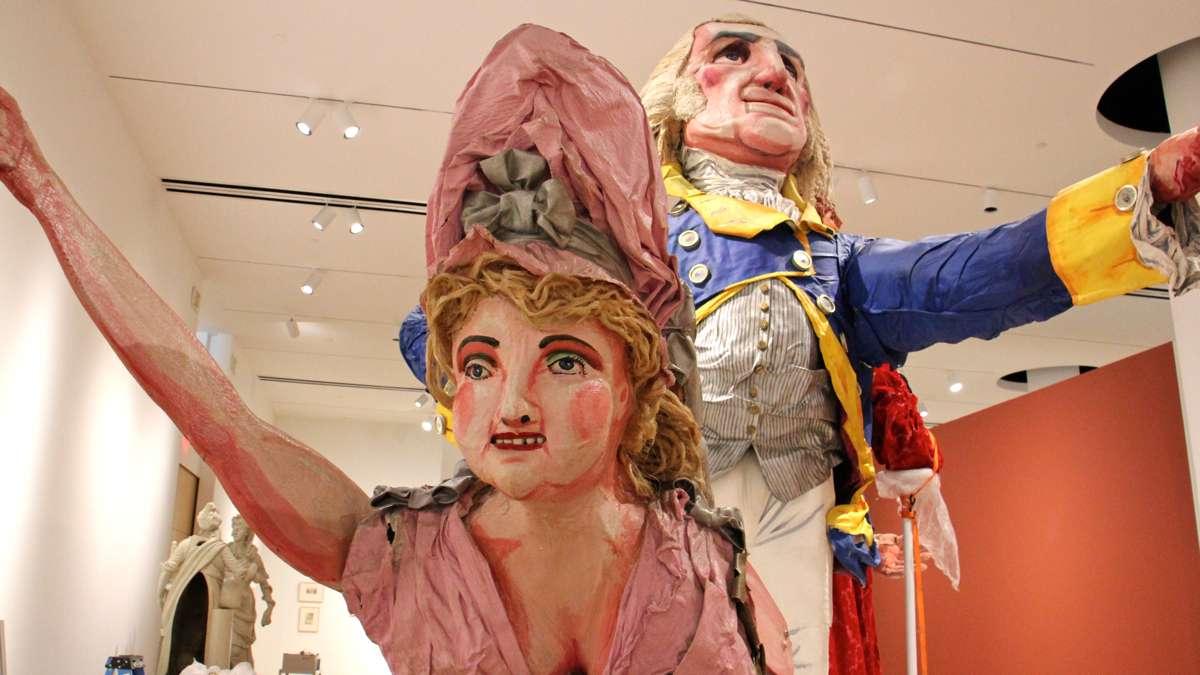
-

-

A new exhibition that explores American politics through art is stirring some emotions for its whimsy and the richness of works that range from the 1800s to today.
For the show, the Pennsylvania Academy of the Fine Arts has assembled paintings, graphic art, cartoons and even gigantic papier-mâché sculptures to tell the story of America’s democracy through the eyes of its artists.
Beginning in the original Furness Academy building, it continues up on the third floor with a series of presidential portraits and busts. One small sculpture catches a visitor’s eye — for good reason.
To illustrate George Washington’s discomfort with public speaking, contemporary artist Brian Tolle created a Plexiglas bust of the first president with all the words of his first inaugural address coming out of his head in beads that cascade down to the floor.
Anna Marley, curator of historic American art at PAFA and one of the curator of the exhibition, said she likes the juxtaposition of contemporary and traditional art. In the room dedicated to the “Cult of Presidential Personality,” an abstract expressionist portrait of JFK by Elaine de Kooning stands next to Washington’s early depictions by Rembrandt Peale, for instance.
Washington is the predominant theme here. He appears in bas-relief medallions reminiscent of Roman emperors, majestic paintings depicting him in full military regalia and modest engravings.
Marley said she’s convinced that “George Washington is one of these universal, I think, positive symbols of the United States.”
But not for everyone, said African-American artist Theodore Harris of Philadelphia whose polemic work is part of the exhibition.
Harris sees Washington as an oppressor. “These people may have been so-called brilliant men but at the cost of whom? At the cost of our freedom, they stayed free. It’s complex, and I think that art is the thing to get to the bottom of that complexity.”
In his collages, Harris plays with political imagery to express his take on historic American conflicts.
Larger than life
Part of that complexity is explored in the wall of presidents, again dedicated not only to George Washington but to Martha Washington, said Marley.
“And I think that’s really important because George and Martha were a pair, they were a political pair,” said Marley. “And, when they were here in Philadelphia, their parties, their household was known as the Republican court, and she was Lady Washington.
“So she was not only our first lady, but she was this political powerhouse in Philadelphia.”
Perhaps the most spectacular art work in this exhibition is Red Grooms’ immense and colorful papier-mâché sculpture of the first president standing very tall and accompanied by a small, but no less important, Martha. She’s depicted as the figurehead of a ship, holding a laurel leaf crown, pointing the way toward the future of the nascent republic.
Behind Washington stands Thomas Jefferson and, near him sitting in a printer’s chair, Benjamin Franklin. They’re all components of the much larger Philadelphia Cornucopia installation unveiled in 1982 for the city’s tercentenary and later abandoned in a City Hall basement.
Though “so many of the pieces decomposed beyond recognition,” Marley said. “When Red Grooms built this piece, it wasn’t made to withstand the ages. So part of our restoration project was to recreate certain parts of the sculpture.”
From the first step into the academy, a sense of respectful irreverence is apparent in the works selected to tell the uneasy story of where arts and politics intersect. Works of protest and dissent take up a large part of the galleries.
Controversy and violence, war, immigration, workers’ rights, the fight against AIDS, civil rights struggle — all part of American history and all standing next to one another in an ongoing conversation. Not always an easy dialogue, said Marley.
“We were very trepidatious about this show when we started working on it because there’s a lot of political landmines, and we have a huge collection to work from, but as it came together we got more and more excited about it,” she said.
The exhibition “Happiness, Liberty, Life? American Arts and Politics” is somewhat designed to attract visitors and participants to the Democratic National Convention, but stays open until September.
WHYY is your source for fact-based, in-depth journalism and information. As a nonprofit organization, we rely on financial support from readers like you. Please give today.



